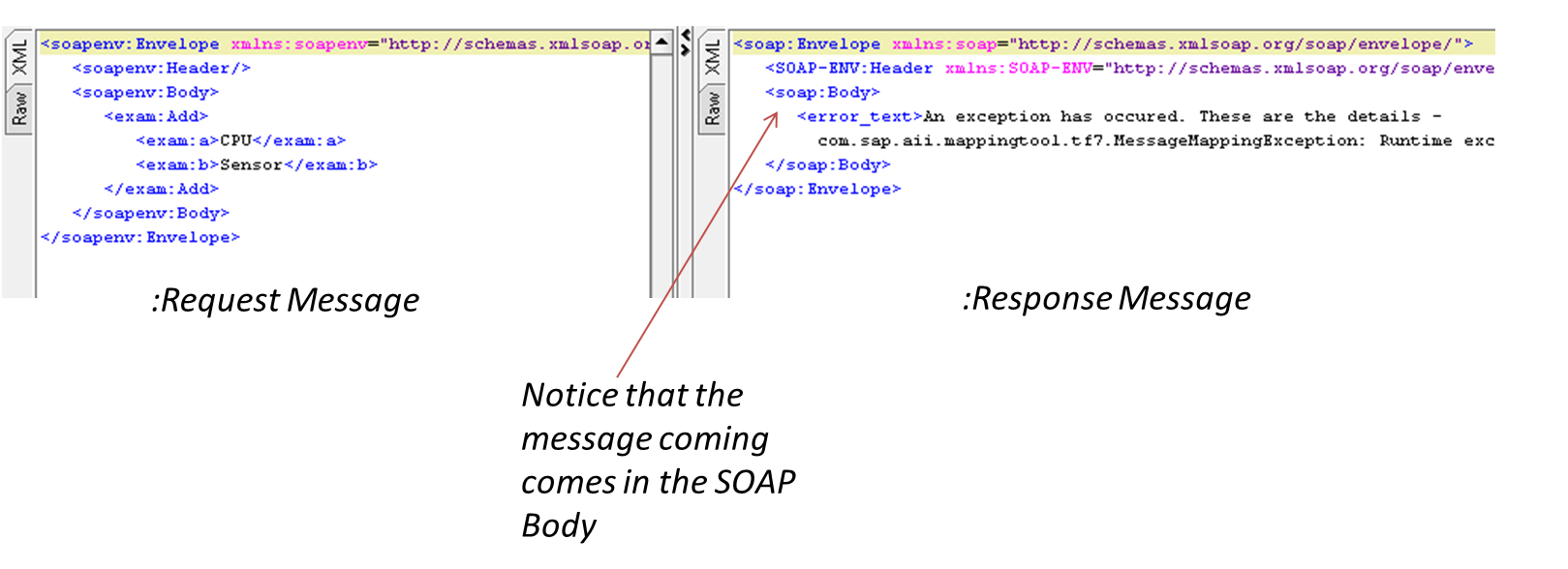
- SAP Community
- Products and Technology
- Technology
- Technology Blogs by SAP
- Blog 4: Modelling Exceptions in Integration Flows ...
Technology Blogs by SAP
Learn how to extend and personalize SAP applications. Follow the SAP technology blog for insights into SAP BTP, ABAP, SAP Analytics Cloud, SAP HANA, and more.
Turn on suggestions
Auto-suggest helps you quickly narrow down your search results by suggesting possible matches as you type.
Showing results for
sujit_hemachand
Participant
Options
- Subscribe to RSS Feed
- Mark as New
- Mark as Read
- Bookmark
- Subscribe
- Printer Friendly Page
- Report Inappropriate Content
01-12-2015
2:26 PM
Hello Integrators!
In this blog, I shall explain how to model exceptions in Integration Flows.
What is Exception Handling?
On a technical definition, exception handling is the process of responding to the occurrence, during message processing, of exceptions. There exists scenarios where you want to control the exception process. For example, during a message processing you want to log all the exceptions in a specific location or server; or you want to modify the exception message sent back to the receiver; and so on.
An exception is handled by saving the current state of execution in a predefined place and switching the execution to a specific subroutine known as an exception sub-process. Exceptions can occur during any of the message processing step - Mapping execution error, Content Routing error, and so on.
How To Model Exception Handling in SAP Cloud Platform Integration?
You model exceptions as a sub-process in the integration flows. To add an exception sub-process to the integration flow, choose Exception Subprocess from the palette. And drop the sub-process into the integration process. Note: The sub-process should not be connected to any of the elements of the integration flow.


In the Integration flow above, when any exception occurs in the message processing - the sub-process is executed.
How does the Exception sub-process work?
Consider the integration flow that we just saw: A SOAP sender sends messages to the integration flow (It is designed to fail at the mapping!) . When an exception occurs in the message processing - the sub-process is called. In the sub-process, we modify the details of the fault message.

Observe the following:
- We have included the following tag ${exception.message} in the Content Modifier step.
- We have used Message End in the exception sub-process.

So - when we send a SOAP message, we get the following response:

Again, observe the following:
- The response comes in the SOAP Body
- You can get more details on exception using ${exception.message} or ${exception.stacktrace} elements.
If I change the End Message to an Error End, the response structure shall change. The exception shall go as part of the SOAP fault message.

Optionally, you can choose to send the exception message to another endpoint.
Example - the sample integration flow we just saw has been modified to to send the exceptions to an SFTP location -

That is all for the exception sub-process! Try it out, and let us know if you have any questions.
Best Regards,
Sujit
- SAP Managed Tags:
- Cloud Integration
16 Comments
You must be a registered user to add a comment. If you've already registered, sign in. Otherwise, register and sign in.
Labels in this area
-
ABAP CDS Views - CDC (Change Data Capture)
2 -
AI
1 -
Analyze Workload Data
1 -
BTP
1 -
Business and IT Integration
2 -
Business application stu
1 -
Business Technology Platform
1 -
Business Trends
1,661 -
Business Trends
88 -
CAP
1 -
cf
1 -
Cloud Foundry
1 -
Confluent
1 -
Customer COE Basics and Fundamentals
1 -
Customer COE Latest and Greatest
3 -
Customer Data Browser app
1 -
Data Analysis Tool
1 -
data migration
1 -
data transfer
1 -
Datasphere
2 -
Event Information
1,400 -
Event Information
65 -
Expert
1 -
Expert Insights
178 -
Expert Insights
280 -
General
1 -
Google cloud
1 -
Google Next'24
1 -
Kafka
1 -
Life at SAP
784 -
Life at SAP
11 -
Migrate your Data App
1 -
MTA
1 -
Network Performance Analysis
1 -
NodeJS
1 -
PDF
1 -
POC
1 -
Product Updates
4,577 -
Product Updates
330 -
Replication Flow
1 -
RisewithSAP
1 -
SAP BTP
1 -
SAP BTP Cloud Foundry
1 -
SAP Cloud ALM
1 -
SAP Cloud Application Programming Model
1 -
SAP Datasphere
2 -
SAP S4HANA Cloud
1 -
SAP S4HANA Migration Cockpit
1 -
Technology Updates
6,886 -
Technology Updates
408 -
Workload Fluctuations
1
Related Content
- Hack2Build on Business AI – Highlighted Use Cases in Technology Blogs by SAP
- SAP Partners unleash Business AI potential at global Hack2Build in Technology Blogs by SAP
- It’s Official - SAP BTP is Again a Leader in G2’s Reports in Technology Blogs by SAP
- Magic Numbers : A Solution to Foreign Characters in SAP CPI in Technology Blogs by Members
- Convert multiple xml's into single Xlsx(MS Excel) using groovy script in Technology Blogs by Members
Top kudoed authors
| User | Count |
|---|---|
| 13 | |
| 11 | |
| 10 | |
| 9 | |
| 9 | |
| 7 | |
| 6 | |
| 5 | |
| 5 | |
| 5 |